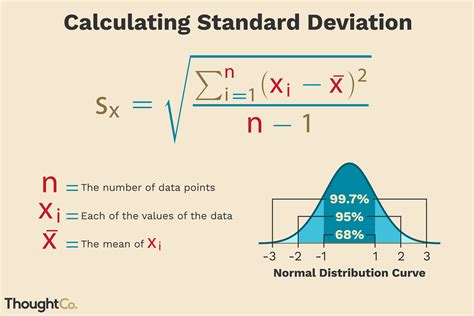Calculating Statistical Range: 3 Steps With Examples

Have you ever wondered how to determine the range of a set of data? The statistical range is a simple yet important measure that helps us understand the spread or variability of data points. By calculating the range, we can quickly get an idea of how much the values in a dataset vary from each other. In this article, we will explore the three steps to calculate the statistical range and provide examples to illustrate the process.
Step 1: Find the Minimum and Maximum Values
The first step in calculating the statistical range is to find the minimum and maximum values in the dataset. The minimum value is the smallest number in the dataset, while the maximum value is the largest number. Let’s take a look at an example to understand this step better.
Suppose we have a dataset consisting of the following numbers: 10, 15, 20, 25, 30. To find the minimum value, we look for the smallest number in the dataset, which in this case is 10. Similarly, to find the maximum value, we identify the largest number, which is 30. Now that we have the minimum and maximum values, we can proceed to the next step.
Step 2: Calculate the Range
Once we have the minimum and maximum values, we can calculate the range by subtracting the minimum value from the maximum value. The formula for calculating the range is as follows:
Range = Maximum Value – Minimum Value
Using our example dataset, the range would be calculated as:
Range = 30 – 10 = 20
Therefore, the range of the dataset is 20. The range represents the span or width of the dataset and gives us an understanding of how spread out the values are.
Step 3: Interpret the Range
Now that we have calculated the range, we can interpret its meaning in the context of the dataset. A larger range indicates a greater spread or variability of values, while a smaller range suggests that the values are closer together or more similar. Let’s consider a couple of examples to illustrate this.
Example 1: Test Scores
Suppose we have the test scores of two students, John and Lisa, as follows:
| Student | Test Scores |
|---|---|
| John | 85, 90, 92, 88, 86 |
| Lisa | 95, 98, 97, 93, 94 |
To calculate the range of John’s test scores, we find the minimum value (85) and the maximum value (92). The range would be:
Range = 92 – 85 = 7
For Lisa’s test scores, the minimum value is 93 and the maximum value is 98. Therefore, the range is:
Range = 98 – 93 = 5
Comparing the ranges of the two students, we can see that John’s test scores have a larger range, indicating more variability in his performance compared to Lisa.
Example 2: Temperature Readings
Let’s consider a set of temperature readings recorded over a week in two different cities, City A and City B:
| City | Temperature Readings (°C) |
|---|---|
| City A | 20, 22, 23, 21, 19 |
| City B | 25, 26, 27, 24, 25 |
The range of temperature readings in City A can be calculated as:
Range = 23 – 19 = 4
For City B, the minimum value is 24 and the maximum value is 27. Therefore, the range is:
Range = 27 – 24 = 3
Comparing the ranges of the two cities, we can see that City A has a larger range of temperature readings, indicating greater variability in temperature compared to City B.
Conclusion
The statistical range is a valuable measure that helps us understand the spread or variability of data points in a dataset. By following the three steps outlined in this article, we can easily calculate the range and interpret its meaning. Remember, a larger range indicates greater variability, while a smaller range suggests less variability or similarity among values. Understanding the range can provide insights into the distribution and characteristics of the dataset.
Frequently Asked Questions
Q1: Can the range be negative?
A1: No, the range cannot be negative. The range is always a positive value calculated by subtracting the minimum value from the maximum value.
Q2: Is the range affected by outliers?
A2: Yes, the range can be influenced by outliers. Outliers are extreme values that are significantly different from the other values in the dataset. If there are outliers present, the range may be skewed and not fully representative of the spread of the majority of the data points.
Q3: What other measures of variability are there?
A3: In addition to the range, other common measures of variability include the interquartile range, variance, and standard deviation. These measures provide a more comprehensive understanding of the spread and distribution of data.
